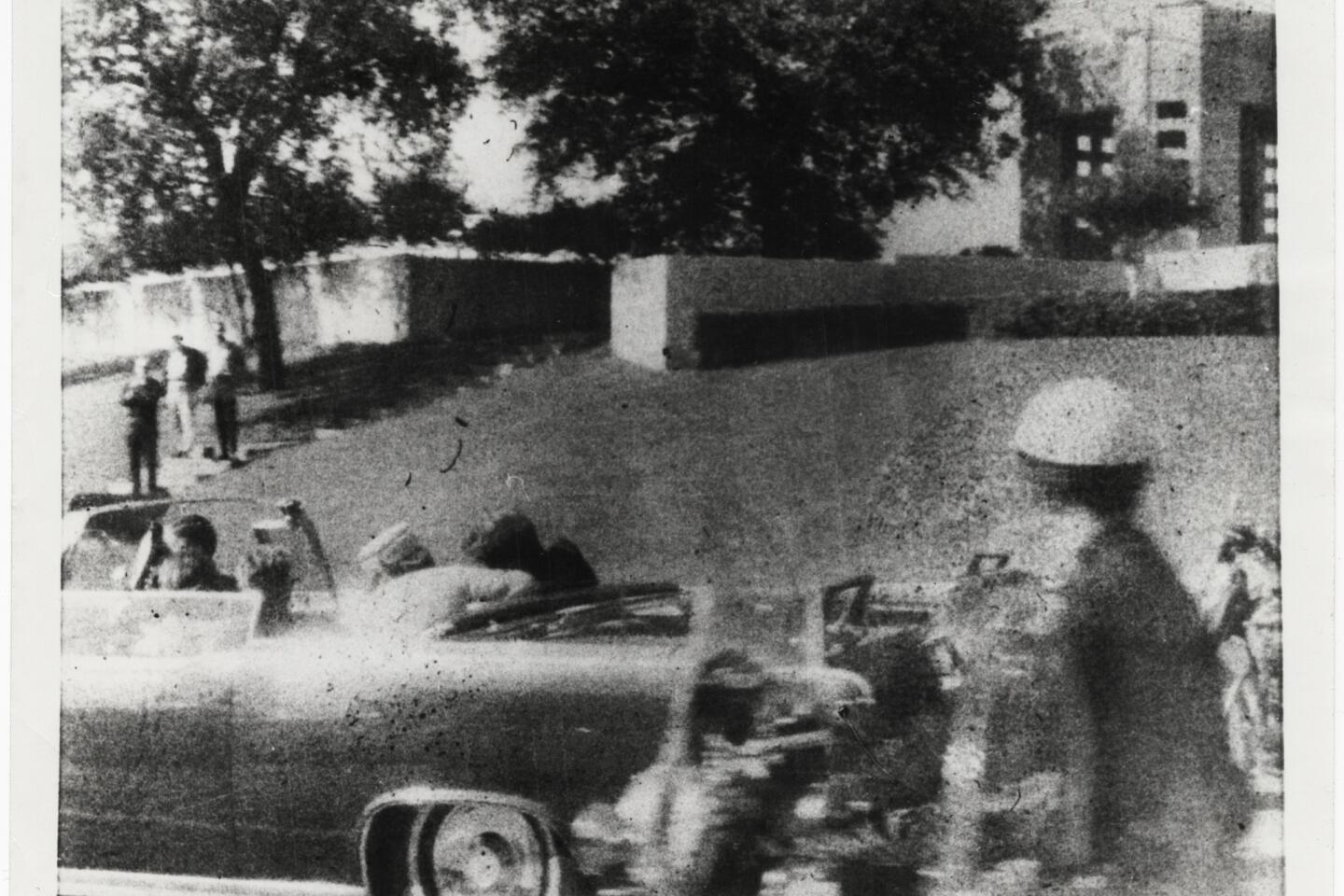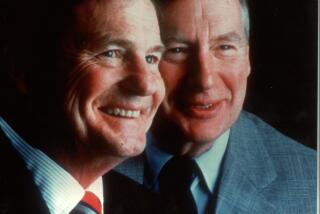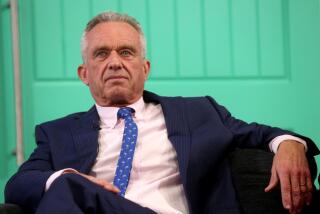Museums take varied angles for 50th anniversary of JFK assassination
United Press International White House reporter Albert Merriman Smith was in Dallas on Nov. 22, 1963, riding in a press car behind President Kennedy’s convertible. As gunshots rang out, he lunged for the radio car phone. Dictating his first-hand account to the UPI office, he uttered the words, ‘“Three shots were fired at the president’s motorcade today in downtown Dallas.” This headline inspired the title of one of several exhibits across the country commemorating the 50th anniversary of John F. Kennedy’s assassination.
“Three Shots Were Fired,” one of two shows at Washington, D.C’s Newseum, examines the media’s role in covering the tragedy and the four days that followed. Of the 100 pieces on display are dozens of front-page newspapers reporting the president’s death, Abraham Zapruder’s camera and five rarely seen artifacts collected from Lee Harvey Oswald on the day of his arrest, including the jacket he wore, his wallet and a card with the address of the Soviet embassy.
“After the shooting the networks went to 24/7 commercial-free coverage for four days,” said curator Carrie Christoffersen. “We don’t see that again until 9/11.”
Intimate photos of the Kennedy family by personal photographer Jacques Lowe reveal happier times in the second Newseum show, “Creating Camelot.” Beginning with JFK’s 1958 U.S. Senate reelection campaign, the 28-year-old German-born Lowe was recommended by patriarch Joe Kennedy, who understood the importance of image in furthering his son’s political career.
Given exclusive access, Lowe was the only photographer in the house the night of the 1960 presidential election. He captured the elusive shot of press secretary Pierre Salinger and journalist Merriman Smith standing outside Jacqueline Kennedy’s sister’s house in London when the president returned from a two-day summit with Soviet Premier Nikita Khrushchev in Vienna in 1961. Lowe, who died in May 2001, took more than 40,000 images of the young Kennedy family. Unable to insure the negatives, Lowe stored them in a fireproof bank vault at J.P. Morgan Chase in the World Trade Center. All were destroyed in the 9/11 attacks. The contact sheets, kept at his studio, were all that remained.
Two years ago the visual resources staff at the Newseum began the arduous process of restoring and reproducing the images from the sheets that were scratched, creased, torn and faded.
“Not only did we have to reconstruct the pieces of the images that had holes, staples and stains, we had to restore the original colors,” said Indira Williams Babic, who oversaw the production.
PHOTOS: How TV reacted to JFK’s assassination
Seventy of the 200 images grace the museum walls with the rest viewable at a digital kiosk.
In New York, the International Center of Photography is presenting an in-depth look at the contributions of citizen journalists with “JFK November 22, 1963: A Bystander’s View of History.”
“Most of the people who got photos of the actual shooting were just bystanders,” noted chief curator Brian Wallis. “I was interested in who these people were and what happened when their personal photographs were elevated to news photography and public pronouncements about this event.”
Original stills from Zapruder’s film, personal snapshots, souvenirs and the backyard picture of Lee Harvey Oswald holding a rifle are a few of the items drawn from its collection that are on display.
Wallis cites Mary Moorman’s Polaroid as one of the most famous amateur photos from that day because it shows the grassy knoll. “That was used as template for a lot of theories about various figures people saw hiding in the bushes,” he said of the image that’s almost completely white and faded. “It’s just this Shroud of Turin-like artifact at this point.”
PHOTOS: John F. Kennedy on screen
Beyond gallery shows, a few photo-centric books offer a glimpse of the formative years of the Kennedy clan and various landmark sites in Dallas.
“John F. Kennedy Sites in Dallas-Fort Worth” by Mark Doty and John H. Slate (Arcadia Publishing, $21.99) shows how the president’s politicking trip to Texas was planned as a two-day, five-city tour. The majority of the sites associated with that day still stand. Two hundred vintage black-and-white photos from the Dallas Municipal Archives show buildings and neighborhoods Kennedy visited, such as Fort Worth’s Hotel Texas, as well as Lee Harvey Oswald’s grave and the Texas Theatre, where he was arrested.
“Rose Kennedy’s Family Album,” with a foreword by Caroline Kennedy (Grand Central Publishing, $45), provides a visual history of the dynastic brood with 300 images from matriarch Rose Kennedy’s private collection taken between 1878 to 1946. Photos of beach vacations, birthday parties and first communions captured the carefree younger generation long before they entered the political arena.
More to Read
The biggest entertainment stories
Get our big stories about Hollywood, film, television, music, arts, culture and more right in your inbox as soon as they publish.
You may occasionally receive promotional content from the Los Angeles Times.








